Symbolic Diplomacy: Trump, Japan’s Emperor, and a Changing World
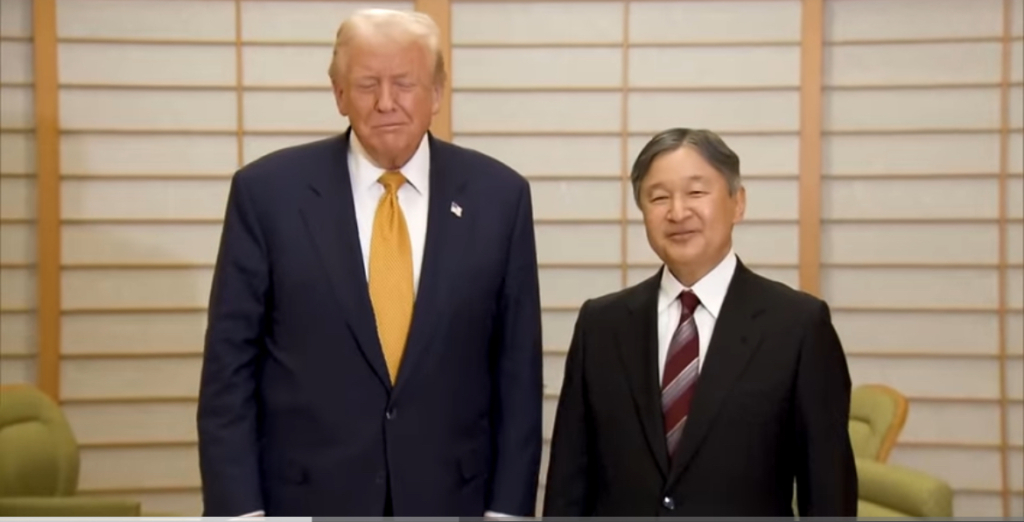
The Symbolic Meaning Behind Trump’s Meeting with Japan’s Emperor
In an age where political narratives often overshadow policy, the encounter between former U.S. President Donald Trump and Japan’s Emperor Naruhito stands as a vivid example of diplomacy expressed through symbolism. Rather than focusing solely on treaties or trade negotiations, this meeting highlights a subtler yet powerful dimension of statecraft: symbolic diplomacy. It represents a shift from traditional power-based politics toward the use of imagery, ritual, and gesture to communicate national intent and global positioning.
Why does this matter today? The world is witnessing a reconfiguration of global influence. The United States, Japan, and other democratic allies are redefining their relationships in the Indo-Pacific region amid China’s rise, new economic dependencies, and technological rivalry. Against this backdrop, Trump’s visit to Tokyo and his audience with Emperor Naruhito in 2025 became a stage where tradition met geopolitics.
Unlike ordinary diplomatic visits, this encounter carried layers of meaning. Every bow, every word exchanged, and even the ceremonial atmosphere inside the Imperial Palace conveyed messages to global audiences. For Japan, hosting Trump underscored its unique role as both a modern democracy and a civilization rooted in continuity. For the United States, it symbolized respect for cultural heritage while reaffirming the alliance’s strategic strength. Together, these gestures built a narrative of mutual acknowledgment in a turbulent world order.
A New Lens on Power and Symbolism
Traditional diplomacy relies on negotiations, sanctions, and policy statements. Symbolic diplomacy, however, communicates through images, rituals, and emotions. When leaders perform state visits, participate in royal ceremonies, or exchange cultural courtesies, they influence perception as much as policy. This is why symbolic diplomacy has become crucial in the 21st century: it captures public imagination, reinforces legitimacy, and shapes the story nations tell about themselves.
President Trump, known for his focus on optics and media, understood this well. His approach to foreign relations often blurred the line between political theatre and strategic messaging. Meeting Emperor Naruhito—Japan’s living embodiment of history and continuity—gave Trump a global platform to project stability and partnership despite domestic controversy at home. For Japan, it was an opportunity to assert soft power, showing that its monarchy still commands international reverence while staying politically neutral.
What This Article Will Explore
This article delves into seven parts to uncover the essence of symbolic diplomacy in this historical meeting. We will trace the evolution of U.S.–Japan relations, examine the Emperor’s unique constitutional role, analyze the key gestures of the 2025 meeting, and interpret their strategic consequences for the Indo-Pacific region. We will also consider the risks and criticisms of symbolism in politics before drawing conclusions about what this meeting reveals about the future of global diplomacy.
Ultimately, the meeting between Trump and Emperor Naruhito was more than a diplomatic courtesy. It was a mirror reflecting how nations use ceremony to communicate power, values, and identity in an age when every image travels instantly across the world. The following sections will unpack the deeper meaning behind this event—and why it may redefine the language of diplomacy itself.
The Evolution of U.S.–Japan Relations: From Conflict to Alliance
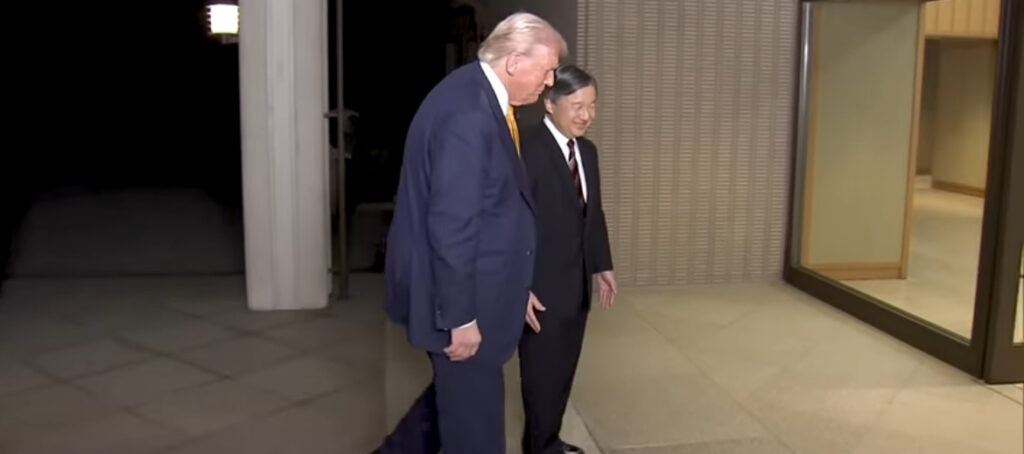
The meeting between President Trump and Emperor Naruhito cannot be understood without revisiting the complex history that shaped the U.S.–Japan relationship. Over the past eight decades, this bilateral connection has evolved from a period of devastating war to one of the most enduring alliances in the modern world. Each stage—conflict, occupation, recovery, and partnership—reveals how two nations transformed their interactions from rivalry to mutual reliance.
From War to Reconstruction
In the aftermath of World War II, Japan lay in ruins both physically and politically. The U.S. occupation (1945–1952) led by General Douglas MacArthur introduced sweeping reforms—new democratic institutions, land redistribution, and the adoption of a pacifist constitution. The Emperor, once considered divine, was redefined as a symbol of the state and the unity of the people, marking the birth of modern symbolic diplomacy in Japan.
This postwar transformation set the stage for reconciliation. The United States saw Japan not merely as a defeated nation but as a crucial partner in stabilizing East Asia during the Cold War. Economic aid and political restructuring turned Japan into a model of recovery and an anchor of American influence in the region.
The Cold War Alliance
The signing of the 1951 U.S.–Japan Security Treaty institutionalized the alliance that continues to define their relationship. Under this agreement, American troops were stationed in Japan, ensuring regional stability while providing Japan with protection that allowed it to focus on economic growth. In return, Japan became a strategic base for U.S. operations in the Pacific, particularly during the Korean and Vietnam wars.
Throughout the 1960s and 1970s, Japan’s “economic miracle” transformed it into the world’s second-largest economy. This success deepened economic interdependence with the United States but also produced occasional friction—trade imbalances, currency disputes, and differing security expectations. Yet, despite these tensions, the alliance endured because both nations recognized its strategic and economic necessity.
From the 1990s to the 21st Century: Partnership Redefined
After the Cold War, the relationship evolved from a purely security-focused partnership to one encompassing shared democratic values, technological cooperation, and regional stability. The 1990s saw Japan taking on a more proactive role in peacekeeping and humanitarian aid, signaling a shift toward international engagement. Meanwhile, the United States increasingly viewed Japan as an equal partner in shaping global norms rather than a subordinate ally.
The 2010s and beyond introduced new challenges—China’s military rise, North Korea’s nuclear ambitions, and global economic uncertainty. Under these conditions, symbolic diplomacy gained renewed importance. Meetings between leaders, royal audiences, and cultural exchanges became instruments to reaffirm trust and signal unity amid changing geopolitical realities.
Why This Historical Background Matters
Understanding this long trajectory explains why the Trump–Naruhito encounter resonates so deeply. It connects a past marked by war and reconciliation with a present defined by shared strategic purpose. The U.S.–Japan relationship has become not just an alliance of convenience but a cornerstone of the rules-based international order. The Emperor’s role as a symbol of peace and continuity amplifies the moral weight of that partnership.
When Trump met Emperor Naruhito, he was engaging not only with a monarch but with a living embodiment of Japan’s postwar identity. The history of mutual adaptation between these two nations gives every gesture, every word, and every image from that meeting a profound diplomatic resonance. In the next section, we will explore how the Emperor’s role itself has evolved—and why his presence in diplomacy remains uniquely powerful in today’s world.
The Role of Japan’s Emperor in Modern Diplomacy
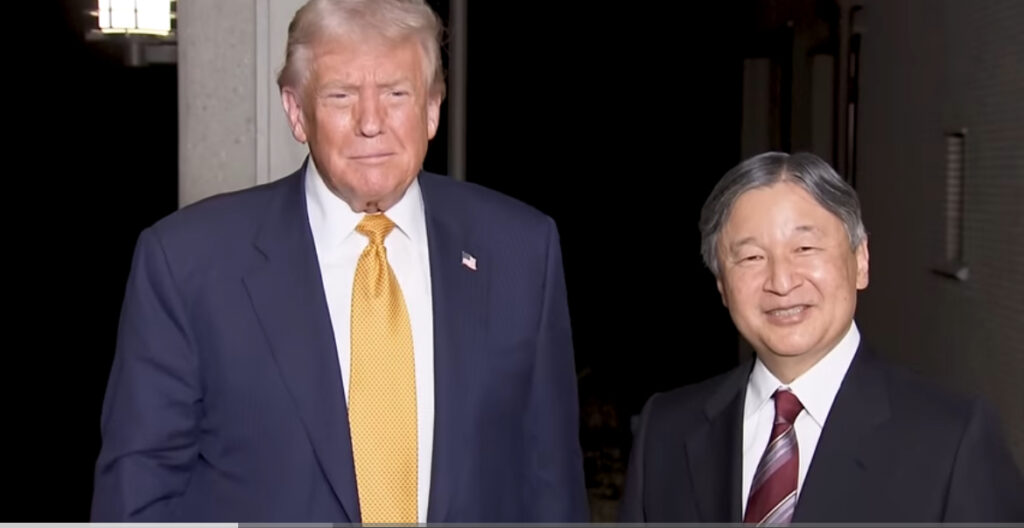
To understand the deeper meaning of President Trump’s meeting with Emperor Naruhito, one must grasp the unique nature of Japan’s monarchy. The Emperor does not govern in a political sense; he reigns as a symbol of the state and the unity of the people, a role defined by Japan’s postwar Constitution. Yet within that symbolic function lies significant diplomatic power—subtle, ceremonial, and deeply cultural. The Emperor represents continuity, peace, and moral authority in a world driven by political flux.
From Divine Sovereignty to Constitutional Symbol
Before 1945, Japan’s emperors were regarded as living deities. However, after World War II, Emperor Hirohito publicly renounced his divine status and accepted a new constitutional role as a figurehead under Article 1 of the Japanese Constitution. This transformation redefined the monarchy’s position from sacred authority to symbolic legitimacy. The Emperor no longer ruled through power, but through presence—an enduring national emblem of stability amid change.
Since then, the Imperial Family has become an essential tool of soft power diplomacy. Imperial visits, receptions, and audiences often signal Japan’s goodwill, gratitude, or reconciliation toward other nations. For example, Emperor Akihito’s historic 1992 visit to China helped ease wartime tensions, while his 2011 meeting with tsunami victims reinforced the image of the Emperor as a compassionate moral anchor rather than a political actor.
Emperor Naruhito’s Global Image
Emperor Naruhito, who ascended the throne in 2019, represents a new era for the Chrysanthemum Throne. Educated at Oxford University and fluent in English, he embodies both Japanese tradition and international awareness. His reign emphasizes themes such as peace, environmental stewardship, and cross-cultural understanding. When he meets foreign dignitaries, his gestures and words carry diplomatic weight without direct political engagement.
In modern Japanese diplomacy, such symbolic engagements often complement the government’s foreign policy objectives. For instance, when Emperor Naruhito greets world leaders like Donald Trump or King Charles III, these events project Japan’s global identity—an advanced democracy with deep cultural roots and a commitment to peace. Unlike political meetings filled with negotiation, imperial audiences convey trust, respect, and continuity. These qualities are invaluable in a geopolitical environment where perception shapes influence.
The Emperor’s Role in the Trump Meeting
When Emperor Naruhito met Donald Trump, the occasion was not just a matter of protocol. The Imperial Palace became a stage where the past and present intertwined. For Trump, being received by the Emperor affirmed his status on the world stage and underscored the enduring U.S.–Japan alliance. For Japan, it signaled that the Emperor’s presence continues to embody the nation’s diplomatic spirit—subtle yet powerful, rooted in culture rather than policy.
Every element of that meeting was carefully choreographed: the traditional bow, the tone of conversation, and the serene setting of the Imperial Palace. These gestures communicated respect, equality, and continuity—qualities that resonate globally. While Trump’s political message centered on trade and security, the Emperor’s role elevated the visit into a symbolic reaffirmation of friendship and shared values between the two nations.
Symbolic Diplomacy in Practice
Japan’s monarchy functions as a bridge between politics and culture. Unlike many constitutional monarchies that maintain a purely ceremonial role, the Japanese Emperor wields considerable symbolic influence both domestically and internationally. Through state banquets, condolence messages, and ceremonial audiences, the Emperor shapes global perception of Japan as a nation of dignity, stability, and peace.
Thus, symbolic diplomacy is not mere pageantry. It is an intentional, strategic act that enhances Japan’s soft power. By embodying national virtues—humility, respect, and harmony—the Emperor projects a moral image that complements Japan’s political alliances. The meeting with Trump exemplified how symbolic diplomacy can reinforce international relationships even when political tensions rise.
A Symbol of Continuity in a Changing World
As global politics become increasingly transactional, Japan’s Emperor remains a rare constant—a reminder that legitimacy can stem from history, culture, and shared memory rather than just power. In this sense, Emperor Naruhito’s presence on the world stage represents not only Japan’s cultural depth but also its strategic intelligence. By cultivating diplomacy through symbolism, Japan maintains influence in a world where perception often defines reality.
In the next section, we will analyze the meeting itself—the gestures, the setting, and the subtle messages behind each moment—to reveal how symbolic diplomacy operates in practice and why the Trump–Naruhito encounter captured the world’s attention.
The Meeting: Key Elements and Symbolic Gestures
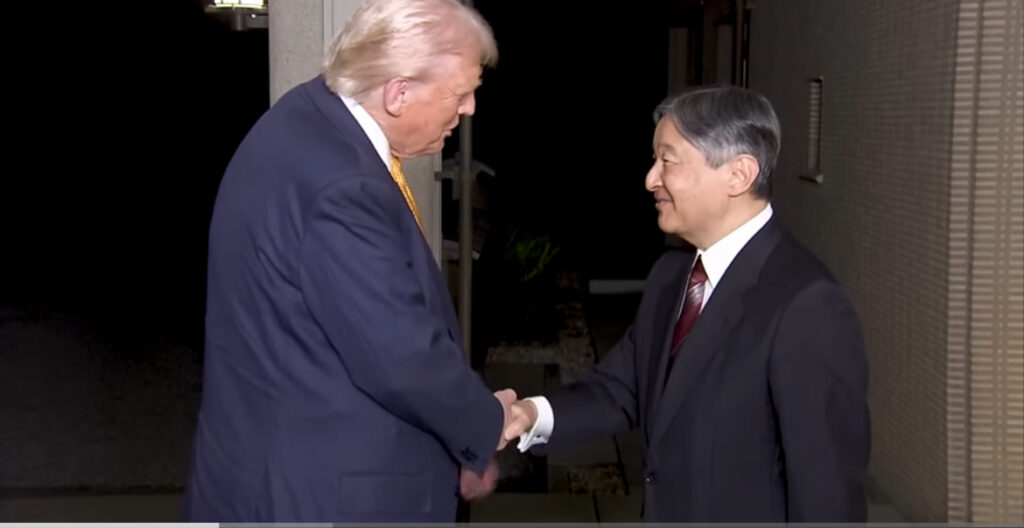
When President Donald Trump met Emperor Naruhito in Tokyo, the world watched closely—not because of new treaties or trade deals, but because of what the encounter represented. It was a masterclass in symbolic diplomacy, where every gesture, word, and setting communicated deeper meaning. In this section, we explore how the meeting reflected Japan’s diplomatic philosophy and America’s global strategy through subtle, carefully crafted signals.
A Stage Set for Symbolism
The Imperial Palace, located in the heart of Tokyo, is more than a residence—it is the epicenter of Japan’s cultural identity. Hosting a U.S. president there is a rare honor, reserved for moments of extraordinary diplomatic significance. The carefully arranged protocol—greeting ceremonies, attire, seating, and even timing—was designed to convey respect, equality, and harmony.
Trump arrived at the Palace shortly after formal discussions with Japan’s prime minister, but it was this imperial audience that captivated global media. Cameras captured the moment Trump and Emperor Naruhito exchanged bows, a gesture that seamlessly blended cultural deference and diplomatic parity. While seemingly simple, that act symbolized the fusion of Western formality and Japanese tradition.
The Power of Ceremony
Every component of the meeting carried layered meaning. The Emperor and Empress greeted Trump and the First Lady with calm composure, reflecting the Imperial Family’s role as the embodiment of peace and continuity. The formal setting—the polished wooden floors, the minimalist architecture, the absence of overt political symbols—created an atmosphere of timeless dignity. It was a space designed to transcend politics.
Analysts observed that this meeting emphasized continuity rather than confrontation. For Japan, the ceremony reaffirmed its identity as a bridge between East and West. For Trump, it was an opportunity to demonstrate respect for Japan’s ancient traditions while projecting the image of an American leader comfortable on the global stage. The choreography of the visit was not accidental—it was diplomacy by design.
Gestures that Spoke Louder than Words
Several symbolic gestures stood out. The Emperor’s measured tone and warm smile conveyed respect without overt endorsement. Trump’s slight bow, in turn, reflected awareness of Japan’s customs—a notable shift from his usual assertive style. The exchange of toasts at the state banquet further reinforced the theme of mutual respect and alliance. Even the floral arrangements—white chrysanthemums and red roses—were chosen to represent the national colors of both nations, symbolizing unity through difference.
Behind the ceremonial surface, the meeting was also linked to substantive diplomatic efforts. Discussions surrounding rare-earth mineral trade, regional defense cooperation, and Indo-Pacific stability were quietly threaded through the official itinerary. Yet it was the imagery of this encounter, not the policy documents, that dominated headlines. In modern diplomacy, symbolism often outlives substance.
Media, Optics, and Global Messaging
The Trump–Naruhito meeting also reflected the growing influence of media optics in statecraft. Global audiences consumed the event as both political theater and cultural narrative. Japanese outlets focused on the grace and decorum of the ceremony, while Western media highlighted Trump’s uncharacteristic composure. This duality reinforced a subtle diplomatic truth: images can soften political divisions and reshape international perception faster than any press release.
By presenting harmony and mutual respect, Japan effectively projected itself as a stabilizing force amid global uncertainty. The meeting also reinforced the Emperor’s soft power as a non-political yet influential global figure. For Trump, the audience provided an image of legitimacy and international stature at a time when his domestic politics were polarized. Both sides gained symbolic value—Japan through continuity, America through recognition.
Diplomacy Beyond Words
Ultimately, the meeting exemplified how diplomacy operates on multiple levels. Policy addresses the tangible—trade, defense, economics—while symbolic diplomacy manages the intangible—trust, perception, and emotion. The Trump–Naruhito encounter demonstrated that successful statecraft requires both. It showed that in an age of rapid media cycles, gestures can carry strategic weight equal to legislation.
In the next section, we will analyze how these symbols connect to larger strategic implications in the Indo-Pacific region—a theater where alliances, trade routes, and power narratives are rapidly shifting.
Strategic Implications for the Indo-Pacific Region
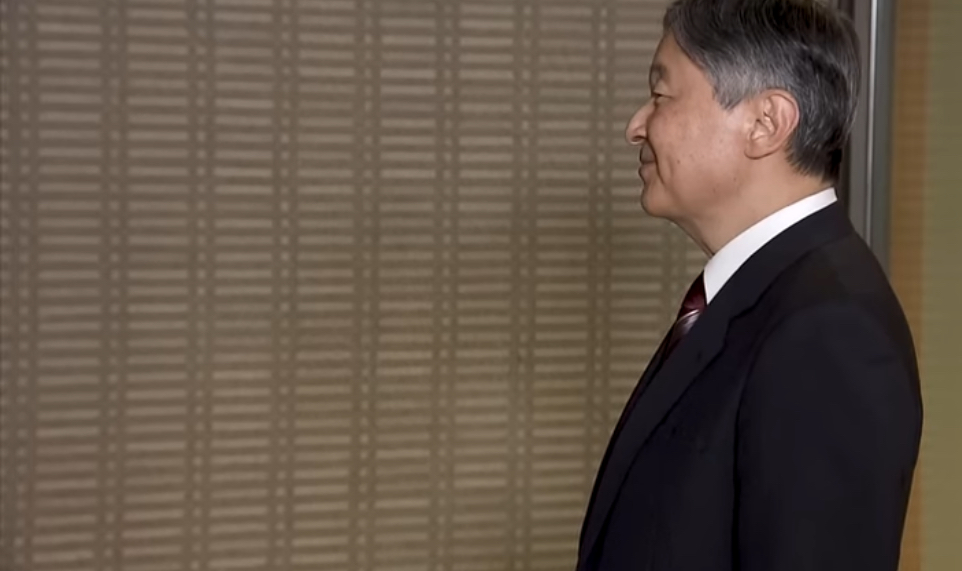
The symbolic meeting between President Donald Trump and Emperor Naruhito did not occur in isolation. It unfolded within a wider geopolitical chessboard—the Indo-Pacific region—where the balance of power is rapidly shifting. While the encounter appeared ceremonial, its deeper resonance lay in how it signaled renewed U.S.–Japan alignment at a time when regional competition with China, North Korea, and Russia is intensifying.
Reaffirming the U.S.–Japan Alliance
For decades, the U.S.–Japan alliance has been the cornerstone of stability in the Indo-Pacific. Yet, in recent years, both nations have sought to redefine the partnership to meet new strategic realities. Trump’s 2025 visit to Tokyo and his meeting with Emperor Naruhito served as a symbolic reaffirmation of this enduring bond. The warm reception within the Imperial Palace projected unity to allies and rivals alike, signaling that Washington and Tokyo remain committed to a shared security architecture built on mutual trust and democratic values.
Behind the ceremony, practical cooperation continues to expand. The allies have strengthened joint defense exercises, enhanced cyber-security coordination, and increased intelligence sharing under the framework of the Quadrilateral Security Dialogue (Quad)—which also includes Australia and India. By reinforcing these ties through both policy and pageantry, the meeting reminded the world that symbolism can amplify strategic intent.
Counterbalancing China’s Regional Influence
China’s assertive behavior in the South China Sea, its Belt and Road Initiative, and growing influence in the Pacific Islands have reshaped the Indo-Pacific power landscape. Japan and the United States, recognizing this trend, are deepening coordination to maintain a rules-based international order. The Trump–Naruhito meeting, though symbolic, reflected this shared purpose. The Imperial audience emphasized respect, dialogue, and balance—values contrasting sharply with coercive diplomacy.
By honoring Japan’s cultural and political traditions, Trump’s visit subtly countered China’s narrative of Western dominance. It positioned Japan as both a regional mediator and a soft-power beacon. In this way, the ceremony itself became part of a larger strategy: using symbolic diplomacy to project an image of cooperation and stability while reinforcing deterrence.
Economic and Technological Dimensions
Beyond security, the meeting also carried implications for economic policy. Both nations are vital players in global supply chains, particularly in rare-earth minerals and semiconductor technology. During Trump’s Tokyo visit, discussions on securing rare-earth supplies underscored the strategic importance of diversifying away from Chinese dominance. The Imperial meeting, covered widely across Asian media, lent moral legitimacy to these negotiations—framing them as part of a shared commitment to sustainable, transparent trade.
Furthermore, Japan’s leadership in green technology and America’s push for energy independence create new areas for bilateral cooperation. Symbolic diplomacy, through moments like the Trump–Naruhito encounter, provides the soft-power context that strengthens these hard-power initiatives.
Signaling to Other Regional Actors
The optics of the meeting also sent calculated signals to neighboring countries. South Korea viewed it as a reminder of Japan’s elevated global profile; ASEAN nations interpreted it as reassurance of continued U.S. engagement in the region. Even India and Australia—Japan’s partners in the Quad—recognized the symbolism as reinforcement of multilateral solidarity. In short, a short ceremonial audience in Tokyo resonated across the Indo-Pacific’s entire strategic ecosystem.
Soft Power as Strategic Leverage
Symbolic diplomacy complements hard power by shaping narratives. Japan’s mastery of ceremony enables it to influence perception without confrontation, while the United States gains moral credibility by participating respectfully in such traditions. This combination of military cooperation and cultural diplomacy forms a dual strategy: deterrence backed by dignity. It shows that alliances today require not only shared interests but also shared imagery.
A New Model of Alliance Communication
The Trump–Naruhito meeting encapsulates a modern model of alliance management—one where optics and substance are interdependent. The U.S.–Japan partnership succeeds not only because of treaties but because of trust reinforced through symbolism. As regional tensions rise, such moments of ceremonial unity remind global audiences that stability depends as much on perception as on policy.
In the following section, we will examine the other side of this phenomenon: the risks and criticisms of symbolic diplomacy—how ritual and image can sometimes obscure substance or invite misinterpretation in international relations.
Risks and Criticisms of Symbolic Diplomacy
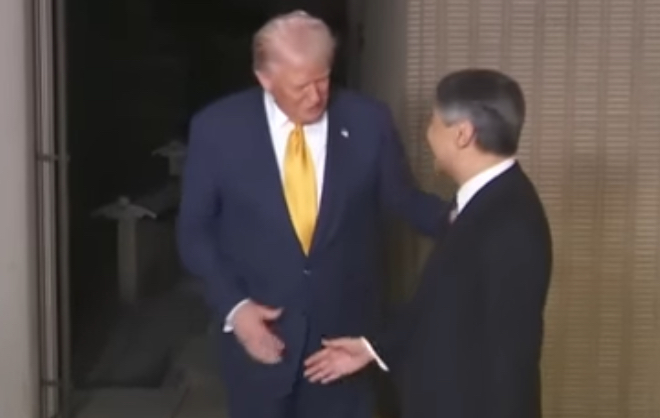
While symbolic diplomacy can strengthen alliances and capture public imagination, it also carries inherent risks. The meeting between President Donald Trump and Emperor Naruhito illustrated how ceremonies can unify, but it also raised questions about whether rituals sometimes overshadow substance. In an age of fast media cycles and political polarization, the boundary between meaningful symbolism and empty spectacle is increasingly fragile.
The Danger of Optics Over Outcomes
Critics argue that when diplomacy focuses too heavily on visual impact, it can dilute genuine policy progress. Elaborate ceremonies and media-driven gestures may create the illusion of success without resolving underlying issues. For example, although Trump’s meeting with Emperor Naruhito projected harmony, few concrete policy achievements followed immediately. Some analysts viewed it as a symbolic performance—a diplomatic show that offered short-term image benefits but limited strategic depth.
This “optics-first” approach risks transforming diplomacy into political theater. When audiences remember images more vividly than agreements, governments may prioritize stagecraft over statecraft. The challenge lies in ensuring that symbolic acts reinforce, rather than replace, substantive policy initiatives.
Misinterpretation and Cultural Sensitivity
Symbolic gestures can also be misinterpreted, especially across cultures with different norms of respect and communication. A misplaced bow, an overly casual handshake, or a mistranslated phrase can alter perceptions dramatically. In cross-cultural diplomacy, symbols carry multiple meanings; what appears courteous in one context may seem condescending in another.
During Trump’s visit, Western commentators praised his composure, while some Japanese observers perceived a lack of cultural nuance in his informal style. These minor discrepancies underscore how fragile symbolic communication can be. The risk is that diplomacy built on imagery becomes vulnerable to misreading, undermining the very trust it seeks to build.
Domestic Political Repercussions
Symbolic diplomacy can also provoke internal criticism. Leaders who emphasize ceremony may face accusations of neglecting practical governance. In democratic societies, where media coverage shapes public opinion, the spectacle of diplomacy can easily become politicized. Supporters may interpret symbolic gestures as signs of national pride; opponents may dismiss them as distractions from domestic challenges.
For Japan, imperial diplomacy must remain carefully apolitical. Any perception that the Emperor favors one nation or leader over another could threaten the constitutional principle of neutrality. Therefore, each imperial audience requires meticulous planning to balance openness with impartiality.
The Risk of Empty Ritual
Symbolic diplomacy loses power when repeated without purpose. Overexposure to ceremonial imagery can desensitize audiences, reducing authenticity. If global leaders rely too heavily on photo opportunities, symbolism becomes routine rather than meaningful. The public may grow cynical, viewing such gestures as performative rather than principled.
To avoid this, successful symbolic diplomacy must link ceremony to clear objectives—policy agreements, humanitarian initiatives, or tangible cooperation. Without this connection, even the most elegant rituals risk fading into history as mere theater.
Balancing Symbolism and Substance
Ultimately, the effectiveness of symbolic diplomacy depends on balance. Ritual and imagery should serve as gateways to deeper engagement, not substitutes for it. When used wisely, symbolism can humanize international relations and sustain alliances during periods of tension. When misused, it can create confusion, mistrust, or superficial consensus.
The Trump–Naruhito meeting thus offers a valuable lesson: symbolism alone cannot define diplomacy. Its strength lies in complementing strategy with empathy, and protocol with purpose. The next and final section will examine what this encounter reveals about the future of diplomacy—a world where meaning and message must coexist in harmony.
Conclusion: The Future of Symbolic Diplomacy
The meeting between President Donald Trump and Emperor Naruhito offered more than a glimpse of ceremony; it revealed how the architecture of global diplomacy itself is evolving. In a century defined by media saturation and shifting alliances, symbolism has become strategy. The encounter demonstrated that gestures, imagery, and rituals now play a central role in shaping international narratives, influencing perception as effectively as policy documents.
Symbolism as Strategic Communication
Modern diplomacy operates simultaneously on two levels: the pragmatic and the symbolic. Treaties, trade, and defense agreements define substance; ceremonies, language, and cultural respect define trust. The Trump–Naruhito audience showed that these two layers are not opposites but complements. By merging American assertiveness with Japanese decorum, both nations projected a shared message of continuity amid global uncertainty.
This blending of hard and soft power underscores a new diplomatic reality: nations must communicate their values as clearly as their interests. Symbolic diplomacy allows them to do both. When used purposefully, it humanizes foreign relations, softens ideological divides, and builds emotional resonance among global publics who increasingly judge leaders by images rather than speeches.
Lessons from the Trump–Naruhito Encounter
From the Imperial Palace in Tokyo, three enduring lessons emerge:
- First, symbolism reinforces legitimacy. Respectful gestures between leaders validate alliances in the eyes of citizens and allies alike.
- Second, culture is strategy. By embracing Japan’s traditions, Trump demonstrated that recognition of heritage strengthens political partnership.
- Third, perception equals power. The ability to control imagery is now a diplomatic asset as valuable as military strength.
These lessons highlight that the boundaries between protocol and policy are blurring. The modern statesman must master both the logic of negotiation and the language of symbolism. Failure to do so risks miscommunication and diminished influence.
The Next Phase of Global Diplomacy
Looking forward, symbolic diplomacy will likely expand as nations compete not only for territory or trade but for narrative dominance. As social media accelerates the spread of political imagery, leaders will increasingly rely on ceremonies, summits, and visual gestures to define their global personas. Japan’s model—anchored in humility, precision, and continuity—offers a blueprint for how culture can sustain relevance even in an era of rapid change.
For the United States, this means rethinking diplomacy as a multidimensional practice where perception shapes policy outcomes. Future administrations will need to balance assertive strategy with empathetic symbolism to rebuild credibility and foster alliances in an era of skepticism.
Final Reflection
The Trump–Naruhito meeting stands as a case study in the evolving grammar of international relations. It showed that power can be expressed through grace, that respect can achieve what rhetoric cannot, and that history itself remains a living actor in diplomacy. When nations engage through shared symbols rather than competing egos, they rediscover diplomacy’s original purpose—to connect rather than divide.
As the world faces unprecedented challenges—climate change, technological disruption, and geopolitical realignment—the lessons of symbolic diplomacy may prove essential. The meeting in Tokyo was not the end of a story but the beginning of a new diplomatic language—one written in gestures, guided by tradition, and understood by all.
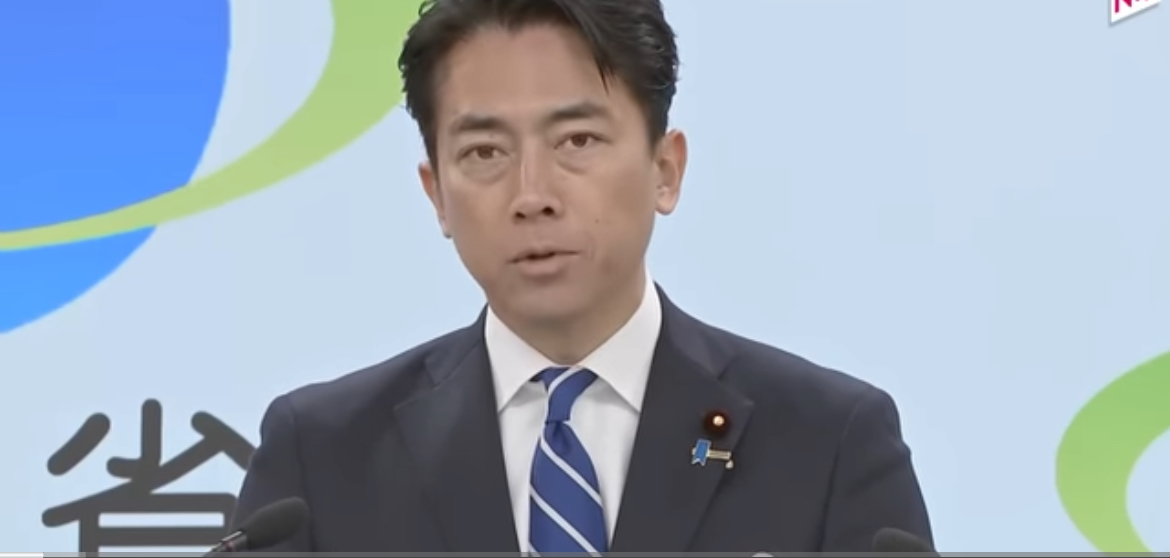
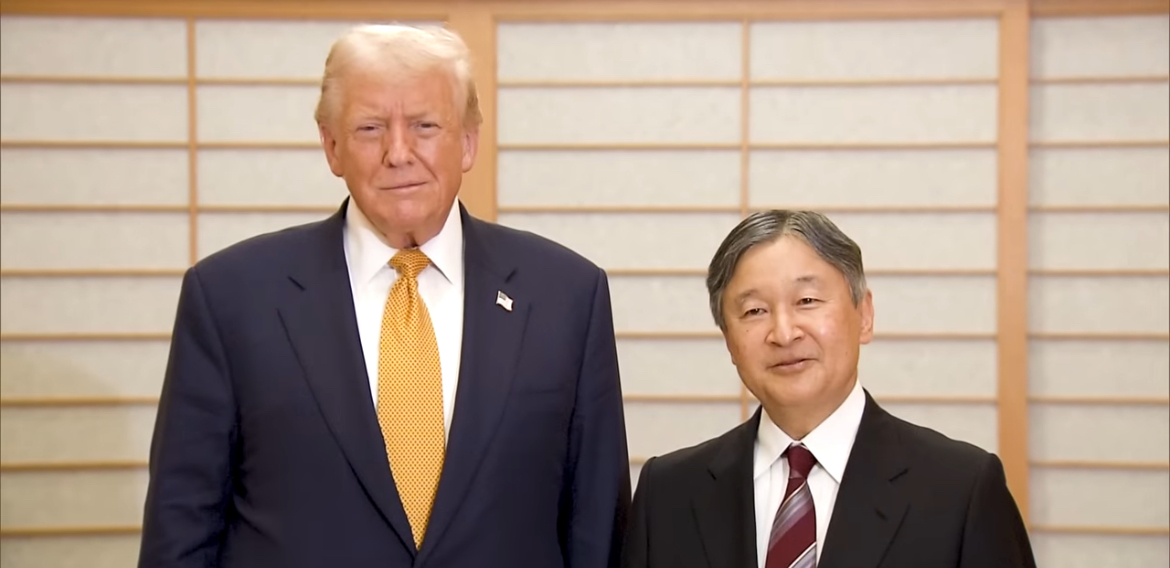
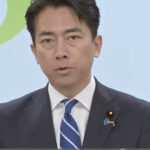
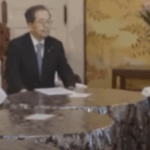

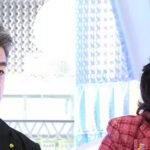

ディスカッション
コメント一覧
まだ、コメントがありません